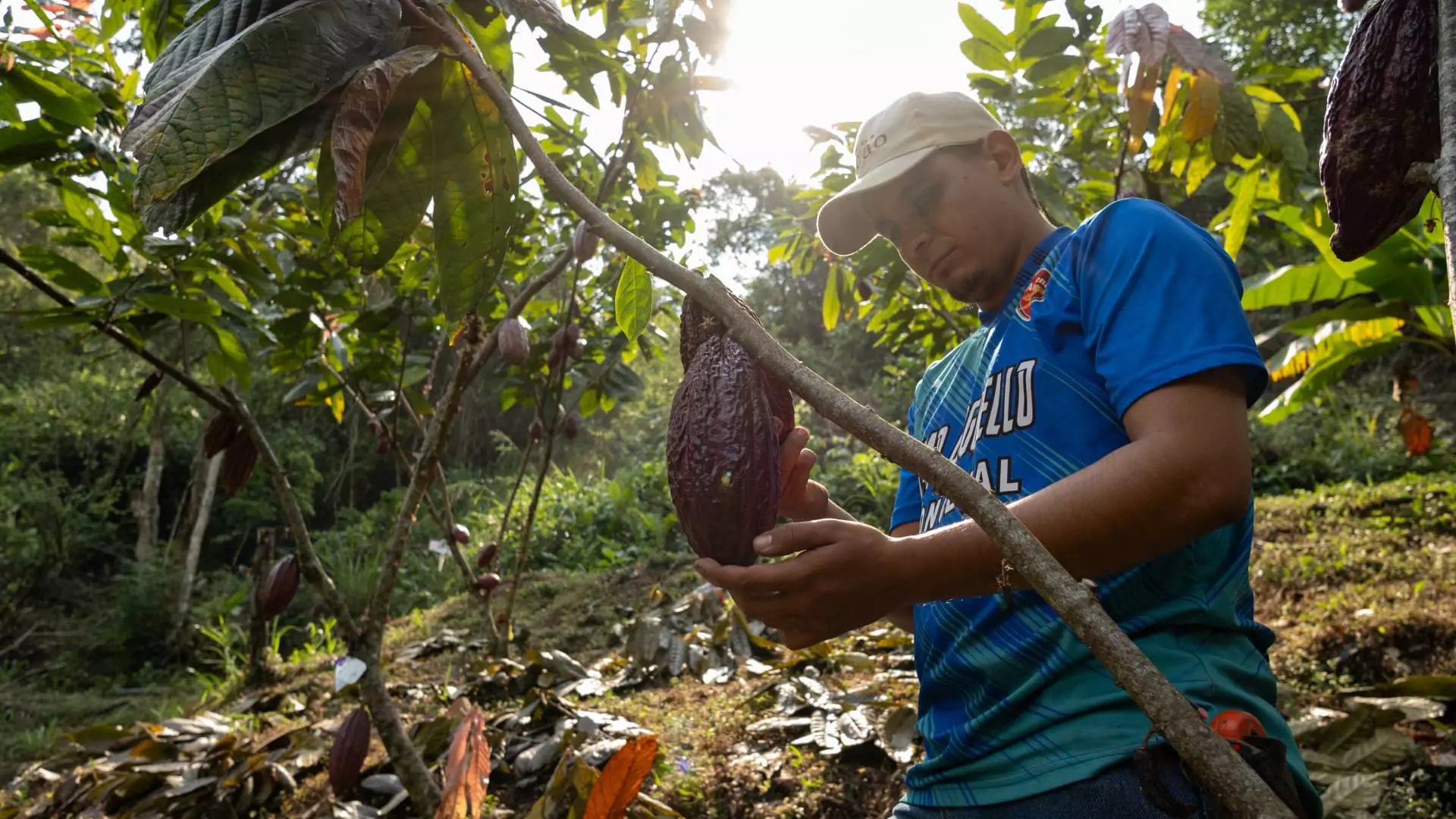The record-breaking rally for cocoa and coffee prices has shown no signs of slowing down, with adverse weather conditions and demand expectations continuing to support the upward trend. Market analysts at Citi have pointed out that cocoa futures recently surpassed the $10,000 threshold for the first time, surging more than 120% so far this year. Despite a slight dip in prices on Thursday, trading between $9,000 to $10,000 per metric ton is expected to stabilize over the next few weeks. However, beyond that, analysts foresee potential risks in the financial market, indicating a possible turning point in the cocoa bull cycle.
Citi emphasized that cocoa grindings, a critical measure of demand, will play a crucial role in determining whether prices will continue to rise. A significant contraction in first-quarter grindings data, coupled with a drop in origin processing, could potentially lead to a market correction, bringing prices down to the range of $7,000 to $7,500 per metric ton. On the other hand, if grindings remain steady and consumer pushback stays limited, prices could skyrocket to $11,000-$12,000 per ton. This uncertainty underscores the complex interplay between supply, demand, and market dynamics.
The challenges facing cocoa production, particularly in West Africa where a majority of the world’s cocoa is sourced, have been exacerbated by difficult weather conditions and disease outbreaks. Regions like the Ivory Coast and Ghana have been significantly affected by a combination of heavy rain, dry heat, and disease, further straining the already fragile supply chain. These disruptions have contributed to the overall bullish sentiment in the cocoa market, with concerns about future production levels looming large.
The return of the El Niño phenomenon has added another layer of uncertainty to the market, with dryness in key producing regions like Southeast Asia, India, and parts of Africa supporting a rally in soft commodities such as sugar, coffee, and cocoa. El Niño-induced weather patterns can lead to increased volatility in agricultural production, affecting both supply and prices. As a result, market participants are closely monitoring these developments to gauge the potential impact on future price movements.
In addition to cocoa, coffee prices have also been on an upward trajectory, driven by a combination of adverse weather conditions and supply disruptions. Citi’s outlook for coffee prices remains positive, with Arabica coffee futures surpassing the $2 per pound mark and showing signs of further appreciation. The recent heat wave in Vietnam, a major coffee producer, has affected Robusta coffee production, providing support for premium Arabica beans. As a result, prices are expected to remain elevated in the short to medium term, with a projected trading range of $1.88 to $2.15 throughout the year.
As market dynamics continue to evolve, investors and traders alike are bracing for potential shifts in cocoa and coffee prices. The intersection of weather patterns, demand trends, and geopolitical considerations will shape the market outlook in the coming months. While uncertainty persists, one thing remains clear: the cocoa and coffee markets are in the midst of a historic rally, with both challenges and opportunities on the horizon. As stakeholders navigate this complex landscape, staying informed and agile will be key to capitalizing on the unfolding trends in these critical commodities.


Leave a Reply